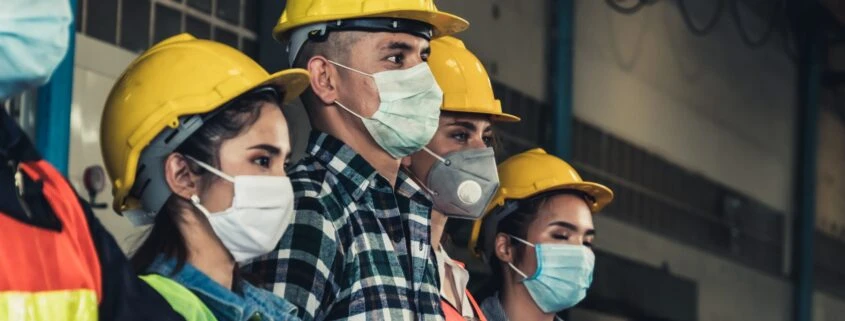OSHA’s COVID-19 Changes
COVID-19 Responses
With the changing ideas and growing knowledge about COVID-19, OSHA has been putting new precautions into effect. One of the first changes is making COVID-19 a required, recordable disease under OSHA’s record keeping requirements. They reversed the April 10th announcement of not requiring employers to track on-the-job COVID-19 cases. The cases only must be recorded if the disease is diagnosed/confirmed by the CDC, or is work-related.
Is it a work-related Illness?
One of the first steps an employer should take if a case is confirmed is asking the afflicted employee how they believe they contracted the disease and discuss any activities that could have lead to the illness. Outside of asking the employee you can also determine if its work-related by looking at the environments around the time of contracting the disease. If many cases develop in your employees at the same time or if the employee became sick after extended contact with a customer or with the general public, then the disease is likely work related. If the employee is the only worker to contract the disease or if they spend time outside of the site with someone (family members, significant other, close friend) who has COVID-19, then the disease is likely not work related.
Updated Interim Enforcement Plan
Employers must report all work related fatalities within 8 hours and work-related hospitalizations within 24 hours. Employers must also report any fatalities that occurred within 30 days of a work-related incident. OSHA will determine if an inspection or an R.R.I. is required after receiving a fatality report. If the hospitalization or fatality was related to COVID-19, then each AD should evaluate the potential risk level of spreading diseases on the site. If a CSHO identifies a workplace with potential exposure and determine an inspection is needed, they must contact supervisors and the Office of Occupational Medicine and Nursing. COVID-19 inspections will be considered novel cases.
Workplace Risk Levels
High risk jobs have a high potential for exposure. This includes, but is not limited to, jobs at hospitals that are treating COVID-19 patients, nursing homes, emergency medical centers, emergency response facilities, places where home care and hospice are provided, settings that handle human remains, biomedical laboratories, and medical transport. Medium risk jobs have frequent or close contact with people who may be infected but are not confirmed. This includes jobs that work with the general public, high-density work places, and meat and poultry processing. Low risk jobs are those that don’t require contact with people who have or are thought to have been infected. These jobs have minimal interaction with the public and other co-workers.
Complaints, Referrals, and R.R.I.s
In high-risk workplaces, fatalities and imminent danger exposures related to COVID-19 are prioritized for inspections. Any complaints about lack of proper PPE for high risk jobsites should be inspected and if deemed appropriate a non-formal phone/fax investigation could be used. If there is an on-site fatality or imminent danger event and the proper resources for an inspection are not available, then a remote investigation will be used until the resources for an onsite inspection can be found. Formal complaints for medium or low risk jobsites will not require an on-site inspection. Employer-reported hospitalizations will be handled using a R.R.I. in most cases. Workers that request inspections, are complaining of COVID-19 exposure, or reporting illness may be covered under one or more of the whistleblower statutes.
Inspection Scope, Scheduling, and Procedures
High-risk job sites will be the focus of inspections if any complaints, referrals, or employer-reported illnesses are found. CSHOs inspecting sites should be familiar with the CDCs prevention guidelines and any individual characteristics and underlying conditions deemed by the CDC to increase the risk for severe illness from COVID-19(being 65 years of age or older, being immunosuppressive, or having a history of smoking). CSHOs will be provided with the proper equipment and supplies to perform an inspection. CSHOs will be encouraged to get the COVID-19 vaccine if and when they become available.
If the inspection of a high-risk site can be conducted without visiting the location in person, then all steps must be taken for CSHOs to avoid such exposure. For example, the opening conferences can be done over the phone or with uninfected personnel. Before taking a walkaround inspection the CSHO should:
- Determine whether the employer has a written pandemic plan
- Review the facilities procedures for hazard assessment
- Review medical records related to worker exposure incidents.
- Review the respiratory protection program
- Review Employee training records
- Determine if the facility has airborne infection isolation rooms
After an inspection, CSHOs must wash their hands with soap and water, decontaminate supplies and equipment using bleach wipes, dispose of all used, disposable PPE and decontamination waste on site, or bag and clean later.
As we continue through this time of uncertainty, feel free to Ask an Expert with any question and concerns.
From all of us here at HB NEXT, stay safe.



